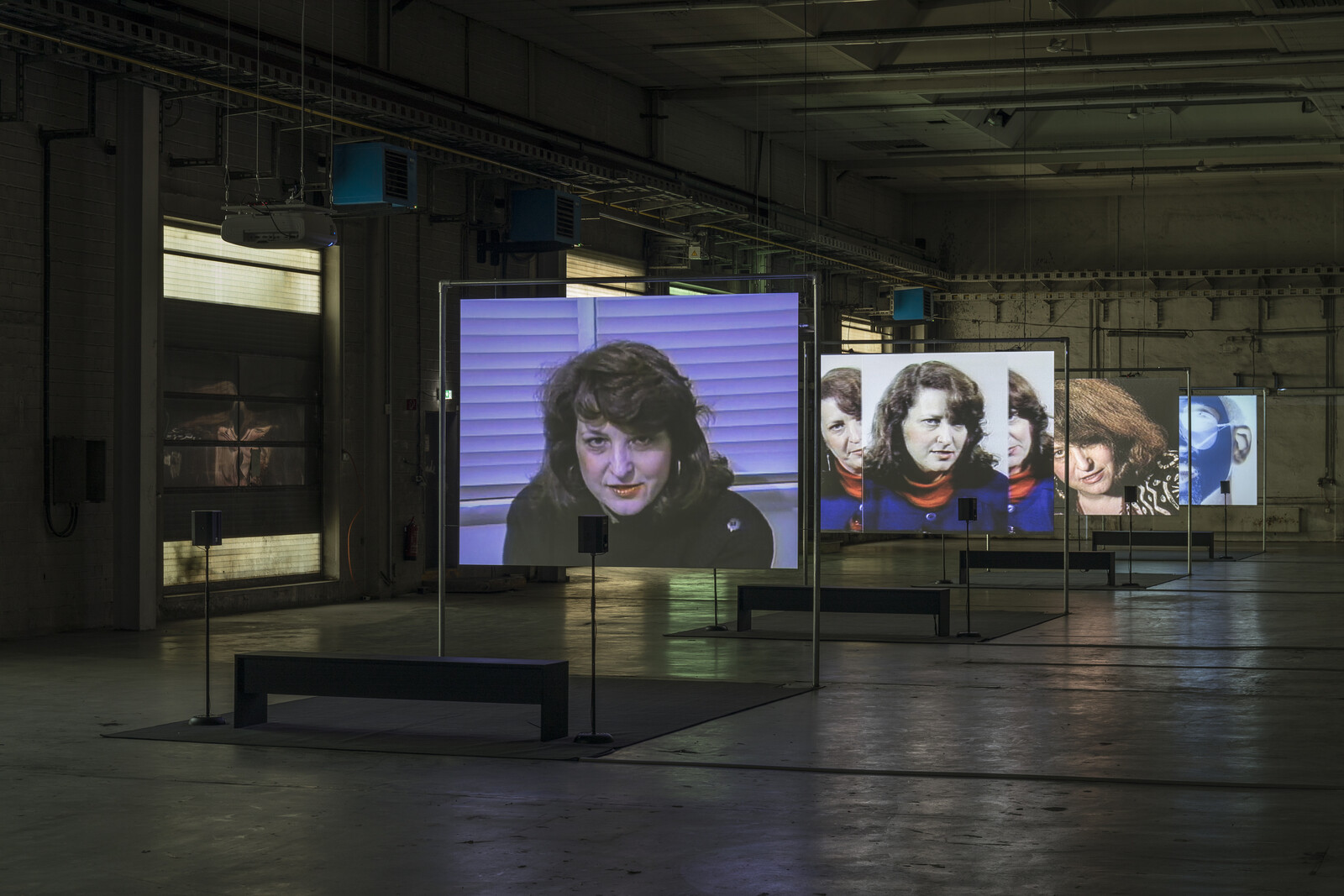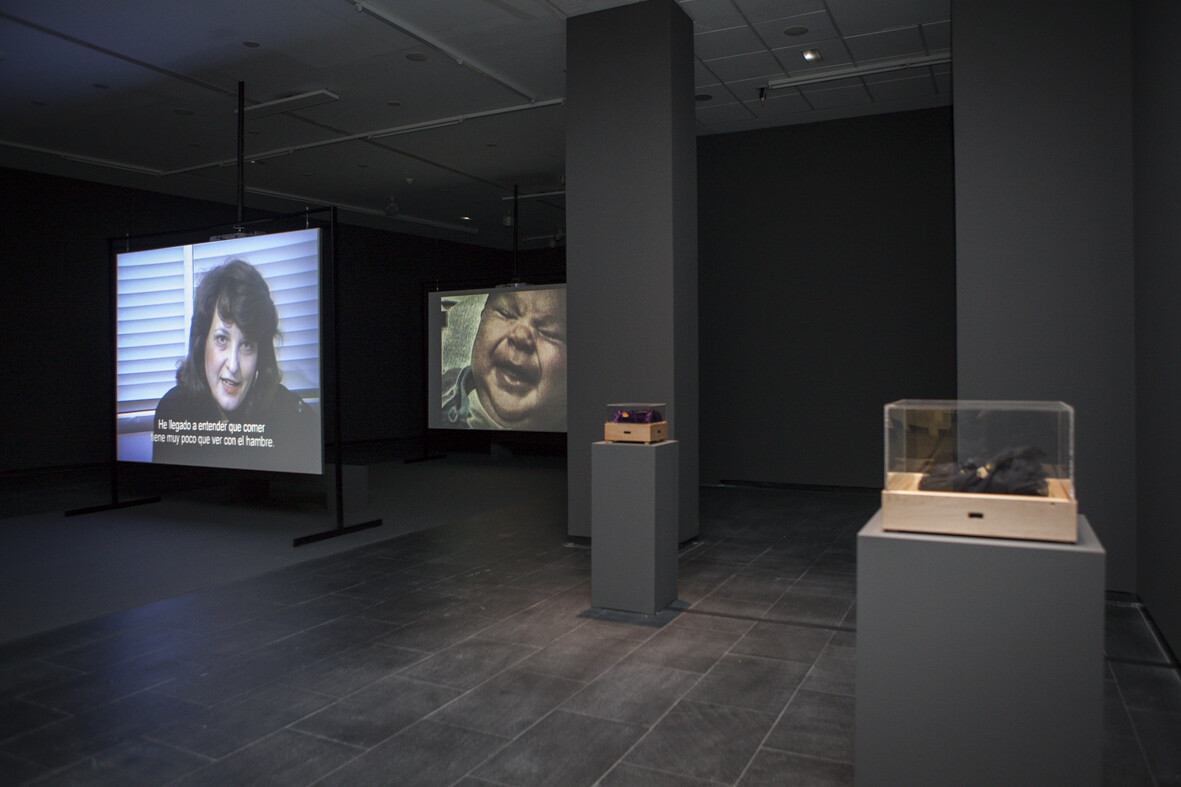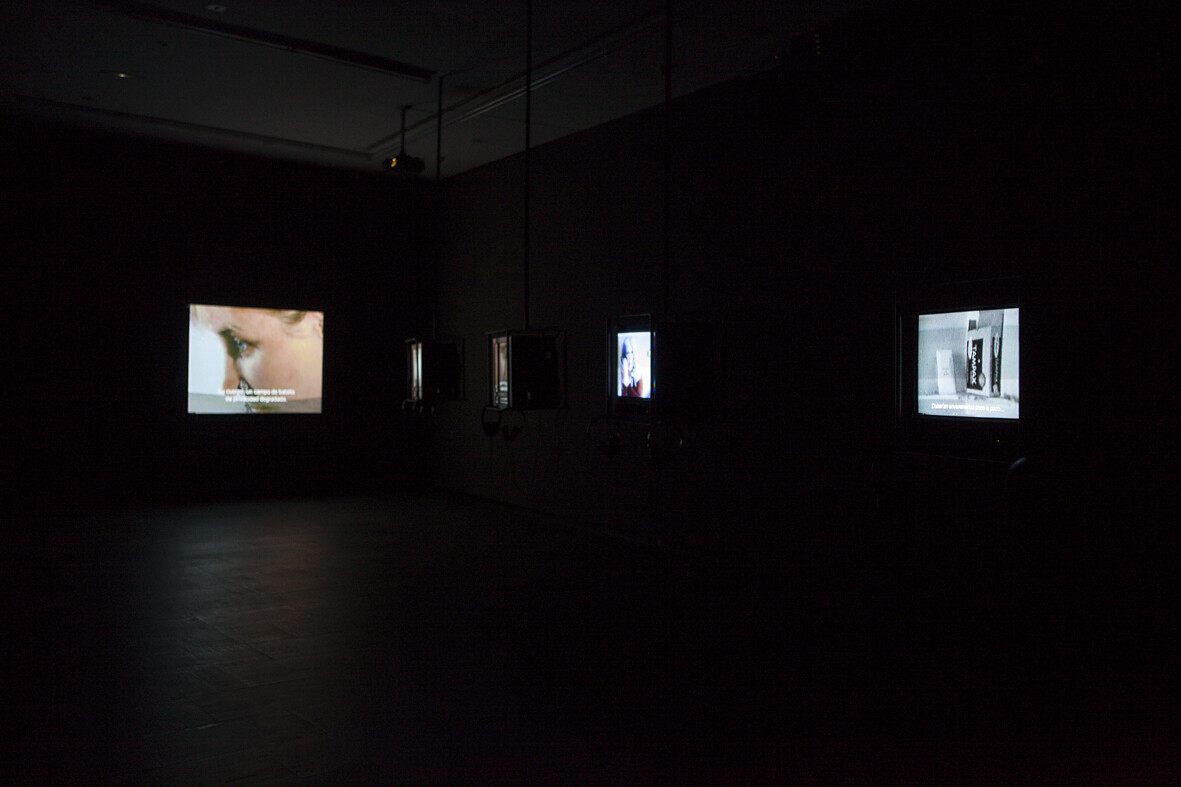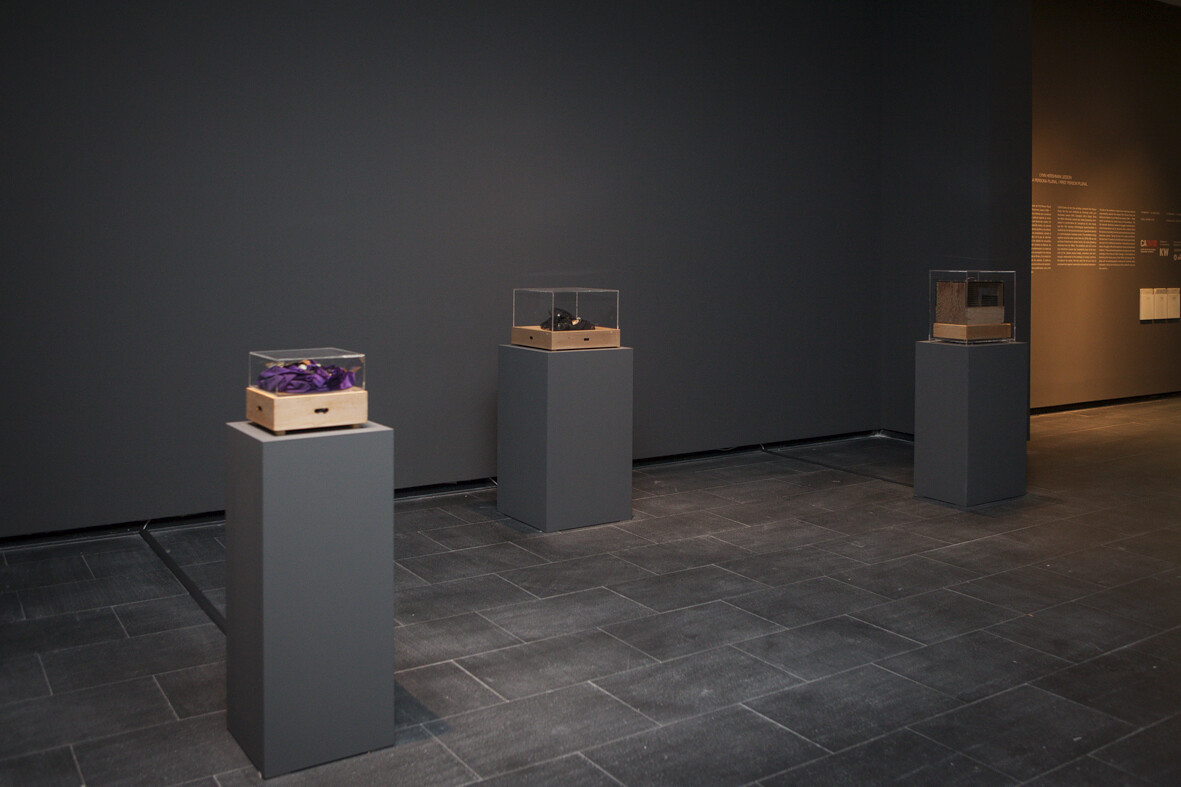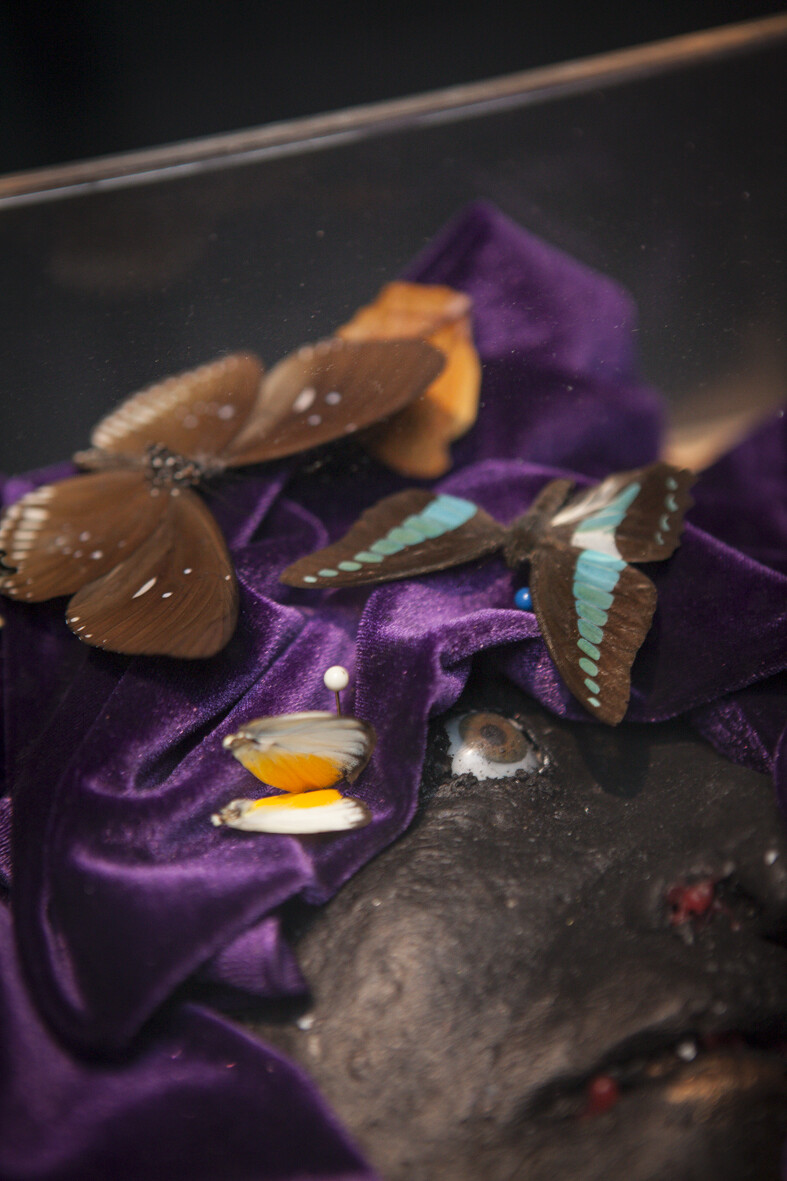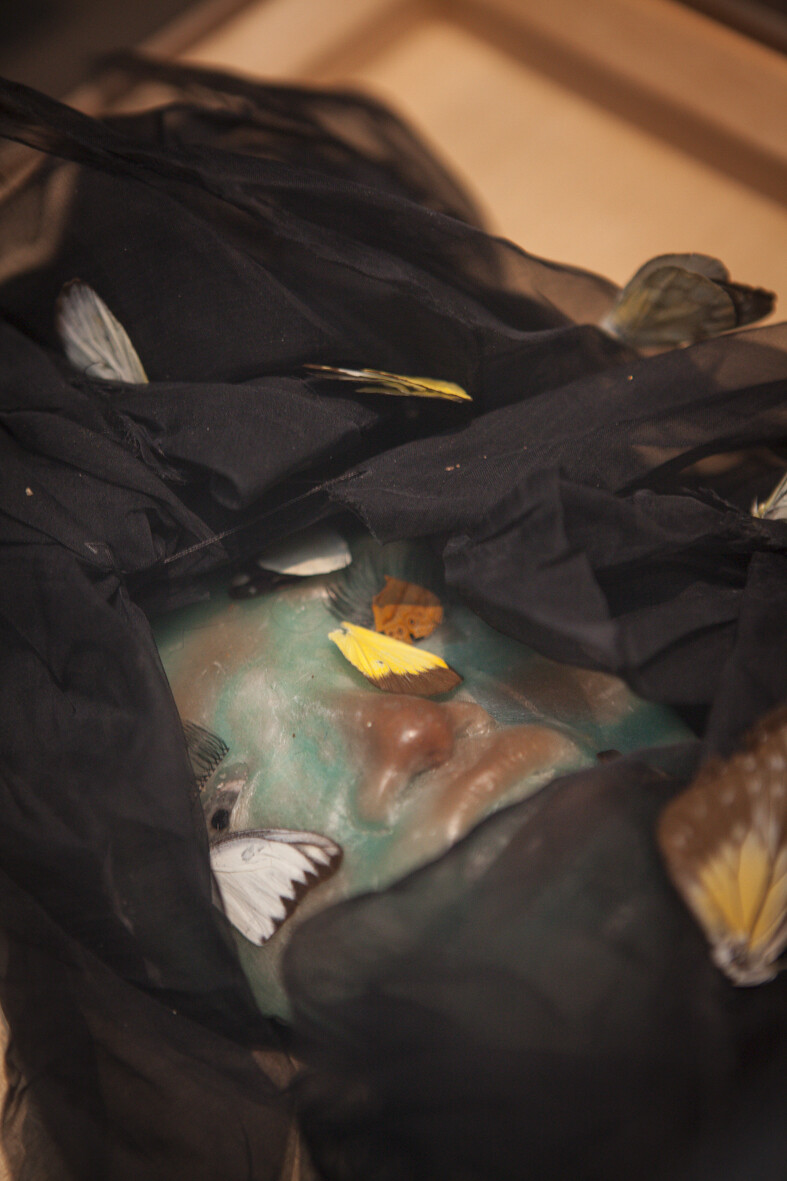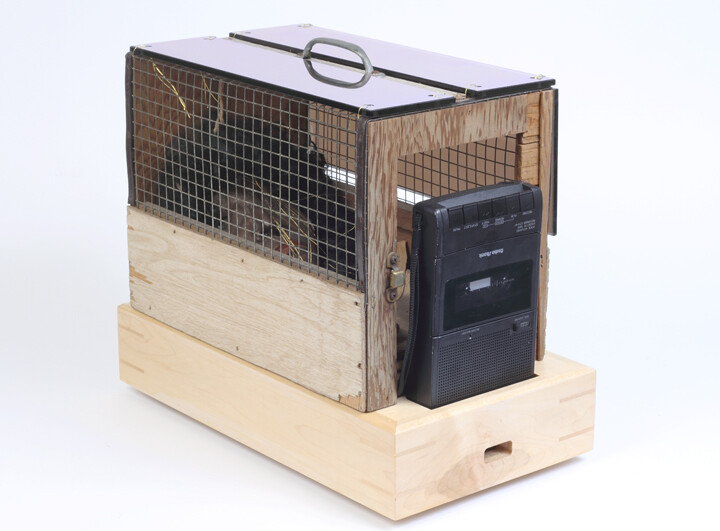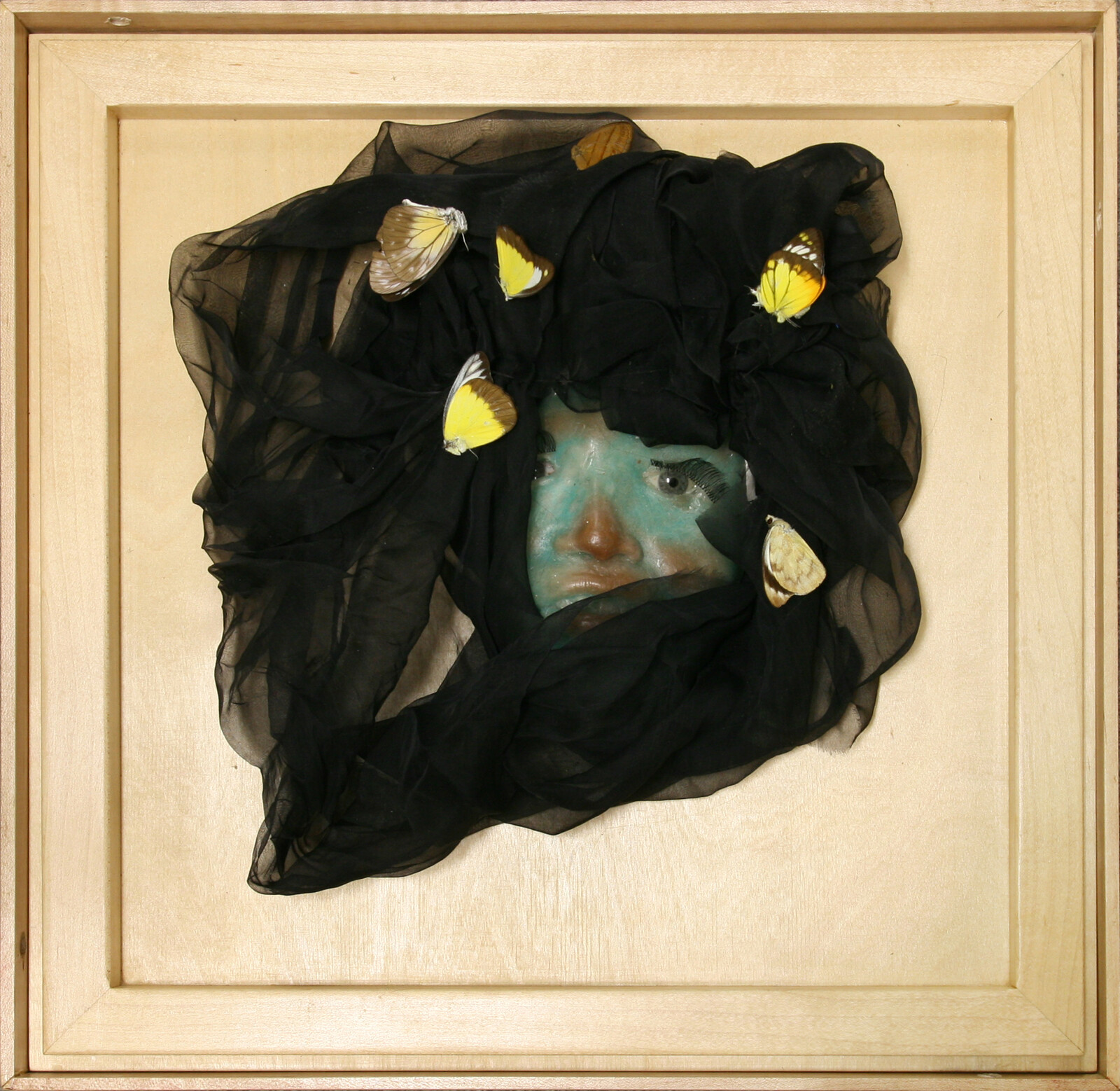Who was Lynn Hershman Leeson between 1965 and 1994? The Centro de Arte Dos de Mayo (CA2M) in Móstoles, a city just southwest of Madrid, is showing “First Person Plural,” focusing on three decades of Hershman Leeson’s oeuvre. The exhibition pivots on questions of identity, technology, and the female, or rather woman-identified, body. As the title suggests, in sidestepping fixed notions of identity of herself as a person and as a woman artist, while considering cyborgian possibilities and the limits of technology, Hershman Leeson’s work today feels relevant and historical at once.
The first work on view in the modest-sized exhibition is The Electronic Diaries of Lynn Hershman Leeson (1984–96), distributed over four screens installed one behind the other. In these confessional and often disturbing video diaries, the artist films herself as she speaks directly to the camera, telling stories of her youth, physical and psychological abuse, binge eating, and trouble with self-acceptance, which are interspersed with sequences of news coverage. The connection of current affairs with diaristic accounts anchors the work in second-wave feminism’s assertion that the personal is political. For instance, a statement of Ronald Reagan dismissing the Iran-Contra affair is followed by Hershman Leeson’s ruminations on lying, betrayal, and mediated reality keeping citizens from knowing the (unbearable) truth. Her analysis of images mirrors their complex, simultaneously revelatory and deceiving nature that still haunts the present. In the last of the work’s four chapters, “Shadow Song,” the artist describes how doctors found a benign tumor in her brain. She only believed them when she saw x-ray scans of the lump. The image generated by electromagnetic radiation penetrating the body is more real than reality, yet, it simultaneously produces an estranged split of the self.
Installed next to the Electronic Diaries are Velvet Voodoo Breathing Machine (1967) and Breathing Machine III (1968)—sculptural objects consisting of wax casts of the artist’s face with glass eyes, hemmed by fabric and adorned with butterflies. The masks are accompanied by tape recorders connected to sensors that activate when viewers are near them, playing breathing sounds when they approach. A third sculpture, Caged Woman (1965), is a portable box reminiscent of a birdcage with a mask inside and a cassette player emitting a barely audible voice. The face replicas are uncanny reminders of the artist’s absence and the instability of identity, while the audio recordings of voice and breath are proxies for a physical body. These responsive works emitting humanoid sounds are both eerie and a tad comical, considering how much animatronics have advanced since the 1960s.
In the second room of the exhibition, the seven-minute sci-fi clip, Seduction of a Cyborg (1994), takes the tone of an infomercial. The video-editing interface is at times visible as part of the work, pointing to the constructed essence of images and of reality. Of all the pieces in the exhibition, this one most evidently registers the changes in image-making, layering, and editing brought about by the wider distribution of personal computers in the early 1990s. In the video, a woman undergoes medical treatment to cure blindness and consequentially gets immersed in the Net. Images literally invade her body and mind as she becomes growingly seduced, addicted, and finally drowned by the online world. Reminiscent of theorists like N. Katherine Hayles and Sadie Plant’s feminist accounts of digital culture and embodiment at the time, a voiceover states: “Her body a battlefield of degraded privacy, loneliness, and terror.”
In the same room, again installed in succession, this time on monitors, are four videos: Commercials for New York Hotel Rooms (1974), A Commercial for Myself (1978), The Dante Hotel (1972), and Becoming Roberta (1978). The latter is one of the last remaining documentations of Hershman Leeson transforming herself into her alter ego Roberta Breitmore. Over a soundtrack of the song “Hotel California” (1976), a male voiceover compliments her as if in a fashion shoot: “What a great shot!” He then goes on to scrutinize her, telling her how to move while she puts on makeup and a wig. Breitmore aka Hershman Leeson hardly says anything other than “hmm” and “ok.”
As Hershman Leeson disappears and Breitmore emerges, it becomes clear how much her work has directly and indirectly influenced younger generations of artists concerned with technology and artifice, like Amalia Ulman or Lizzie Fitch and Ryan Trecartin. Quotidian experiences in a mediated world of reality TV and Instagram profiles are grinning grimaces hyperbolizing the fluidity of identity and its performance. That said, the topicality of especially women’s and non-binary identity, in an art field dominated by men, has hardly waned. The question of identity politics remains pertinent in a time when right-wing identitarian alliances usurp emancipatory strategies in a confused, reversed rhetoric to rally against the “threat” of loss of privilege and hegemonic culture, and the “burdens” of political correctness alike. Hershman Leeson, in being all of her characters at once and none of them at all, reminds us of the cyborgian project, urging us to reclaim it from reactionary forces and commodification in biotech industries alike.

